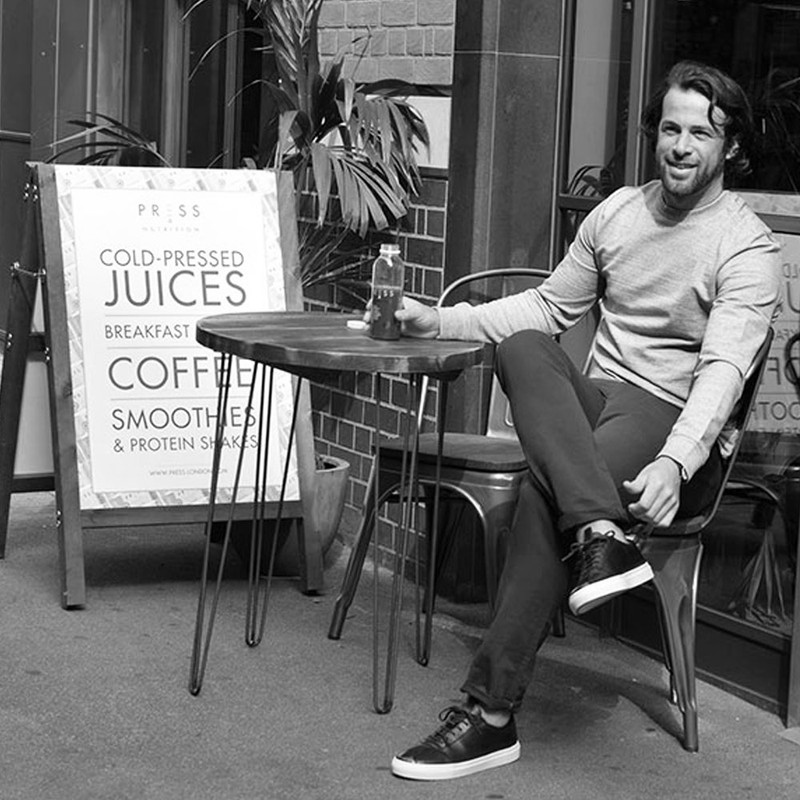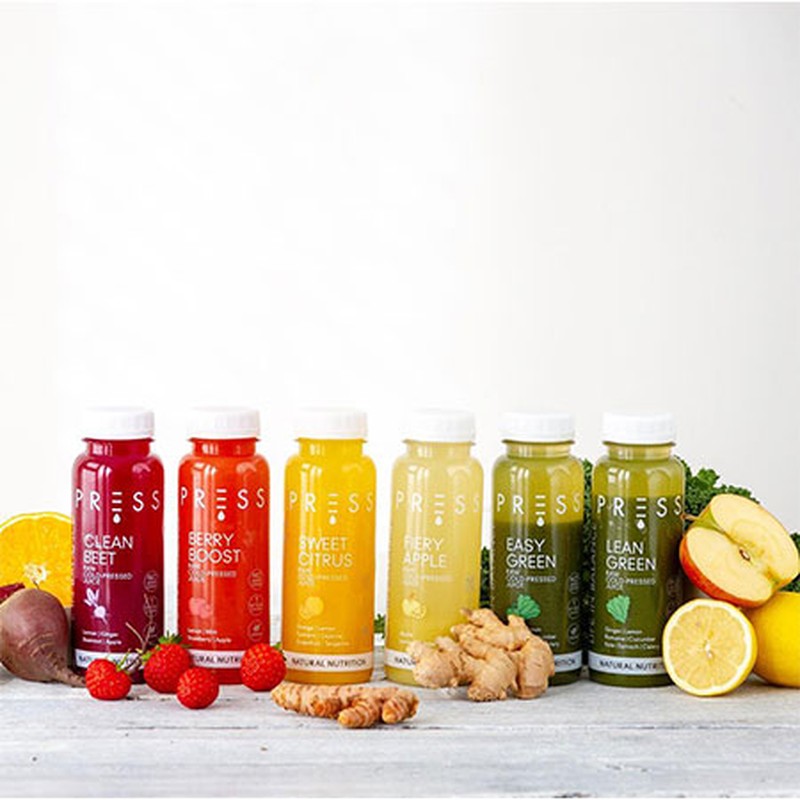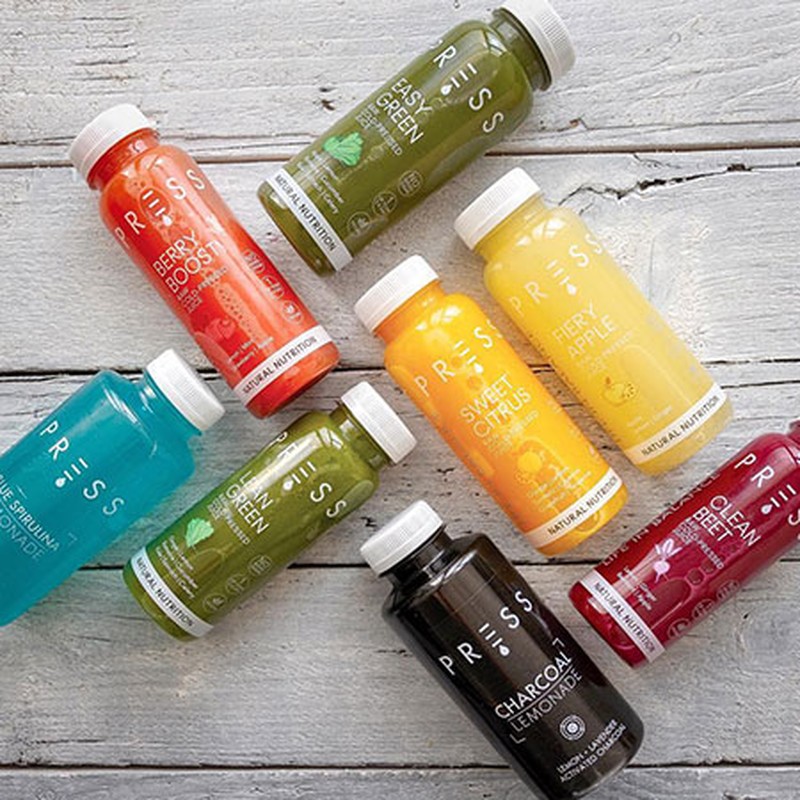The Man Behind The Brand: Press London
Let’s start at the beginning… Where did you study?
I went to Oxford and studied biological sciences – not the sexiest degree, but when I did my dissertation on the mating habits of the common fruit fly, things got a lot spicier. Five years later I was lucky to get a place at Harvard to do my master’s in business. I’d always been interested in keeping healthy and grew up playing sports for as many hours of the day as possible.
What were you doing for work?
I was really working in Nashville, Tennessee, helping to plan and launch a hospitality space called Pinewood Social. It was an old warehouse on the river that today is a restaurant, vintage wood bowling lanes, an outdoor pool complete with Airstream trailer, coffee bar and workspace. How did I end up in Nashville? Long story short, I owe Max and Ben Goldberg huge thanks for rolling the dice on me.
How did the idea for PRESS London come about?
Juice was a really huge movement in the US that didn’t exist in the UK and Georgie, my co-founder, had the lightbulb idea of bringing cold-pressed juice bars back to London. I was 31 – and the dangerous combination of confident and naive. We both started working on the idea part time and then transitioned over. We moved back to London purely to start the business. I still miss a lot about the US, and the energy of entrepreneurs over there – and people did really like the British accent.
So what came next?
We brought over two tiny machines from the US, started mixing flavours, designed a logo and opened our first shop in Old Street tube station – selling out of a branded vintage bathtub on wheels I picked up on Ebay for £60. We took inspiration from gas stations in the US and put the drinks on ice. It made even an ordinary can of Sprite look enticing in the States and did the same for our juices – and anything to make it more fun or easy for a customer to come up and engage with us. It was a hectic time, but people were buying the product. There wasn’t a lot of sleep between keeping up the production and running the stall, but we felt it proved the demand.
Talk to us about cash flow… How did you get the money together to start?
Georgie and I both had some money from savings and some from parents, who have been amazingly supportive all the way through. We had enough to open our first store, but not enough to choose the right location. We actually made the terrible error of opening in an off-pitch site, which made retail so hard. We just didn’t have the money to open something in a great site given the deposit and build requirements, so footfall became a real issue. We were also so consumed with building the place and making it right that we forgot to broadcast that we were opening. It’s shameful when I think back, but we learnt some core lessons early..
Tell us about your first product…
We had been in LA and Georgie knew this guy named David who started a place called the Beverly Hills Juice Bar around 1976. He found it amusing that the rest of the world had finally cottoned on to the fact that cold-pressed vegetable juices and smoothies are insanely good for you and delicious. We spent days studying under him and learned the art of juice making. Because we knew that green juices were at the leading edge, we developed our Lean Green and Easy Green juices first, then our Hot Green juice with jalapeño.
And who was making the product?
We were renting out space in a Territorial Army barracks at the start. It was the most surreal experience: we were making juices on these tiny, messy machines while the guys in the barracks were playing badminton next door. Those first months were tough – literally, no sleep and no rest. Just making juice and selling juice. Eat, sleep, repeat. The biggest challenge was genuinely making enough juices to sell - a great situation to have, but also breaking in terms of sleep deprivation.
Your juices were discovered by the head food buyer at Selfridges – how did that happen?
It was by pure chance that the Selfridges buyer came across us. At the time, PRESS consisted of two small retail locations, an online business and a kitchen for production. It was insanely hectic and the production side of things was madness (we had built a cold kitchen in a railway arch). Anyway we had 24 hours to pull a presentation together for Selfridges and long story short ended up with a full concession in store. We will always be so grateful to Nicola Waller for taking a chance on us. Being partnered with a leading retailer has been great. They demand a lot of us but we have always strived to work with them rather than against.
What happened next?
We felt we had proved the concept, so we went looking for an investor to help us grow the business. We were fortunate to meet Steve Clarkand he invested. He has been the best investor you could ask for: pushing when needed, being patient also. As he said when he invested, not one investment he has made has gone anywhere near according to plan. It’s a long journey. We then crowd funded two years later, which went very well.
Back to the present, where are you stocked now?
We are actually now in 700 doors in the UK, which is down to our talentedsales team who have never stopped hustling. We are lucky to work with Whole Foods, Ocado, Amazon Fresh and Grind. We have our online business, which has doubled over the last six months and that’s really exciting. We deliver our juices, soups and snacks to people’s doors or offices; and we sell a huge number of cleanses. These can range from 24-hour juice cleanses to 28-day full food programmes.
When did you take a salary?
From when we first took investment. At one point I had to drop it right back down because we were struggling, but that’s kind of the way it goes. It’s never a straight line.
Have sales turned into profit?
This is an ongoing journey. We put everything back into growth, so we always try and tread the line of break-even to maximise growth.
What are your bestsellers?
Our pure green juice Lean Green (with no fruit) and our Berry Boost, which is delicious but obviously has natural sugar in it from the fruit.
Finally, how do you set yourself apart from the myriad other juice brands out there today?
We have kept diversifying. Today our sales are much more spread across our soups, vegan meals and waters (we have a sparkling range on the way). The other thing is that, unlike when I started, I don’t focus on an exit, which is what business school programmes you to do. It’s never a great idea to try and captain the ship with one foot in the lifeboat, so instead I now focus on trying to build a truly world-class company that embodies the things future generations will admire. If that’s my life’s work, I think that would be a worthwhile thing to have done.
Visit PRESS-London.com
DISCLAIMER: We endeavour to always credit the correct original source of every image we use. If you think a credit may be incorrect, please contact us at [email protected].




